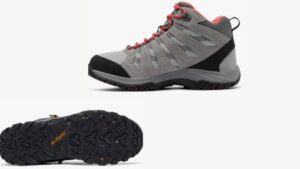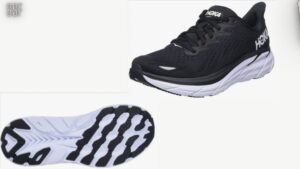In this topic, I’m going to talk about STNDRD: Standard in shoes, drawing from my own personal experience. The world of footwear can be quite complex, with various terms and standards that might seem overwhelming at first. However, understanding what STNDRD: Standard means can help you make more informed choices when selecting your next pair of shoes.

TABLE OF CONTENTS
ToggleWhat is STNDRD: Standard in Shoes?
STNDRD: Standard, often simply referred to as “Standard,” is a term used in the shoe industry to denote a set of guidelines or specifications that shoes must meet. This standard ensures that footwear provides a certain level of quality, comfort, and safety. Here’s a breakdown of what this means: ==>> Check out the latest shoe models for Standard that you need here
Quality Control
One of the main aspects of STNDRD: Standard is ensuring that shoes are made to a specific quality. This includes the materials used, the craftsmanship, and the overall durability of the footwear. For example, a shoe meeting the standard will have well-stitched seams, durable soles, and quality materials that withstand regular wear.
Comfort and Fit
Comfort is key when it comes to shoes, and STNDRD: Standard addresses this by setting criteria for proper fit and cushioning. Shoes that meet this standard are designed to provide adequate support and prevent discomfort, helping you avoid issues like blisters or foot fatigue. ==>> Check out the latest shoe models for Standard that you need here
Safety Features
Safety is another critical aspect covered by STNDRD: Standard. This includes features like slip-resistant soles and proper arch support, which are crucial for preventing accidents and injuries. Shoes that adhere to this standard are tested to ensure they offer protection against potential hazards, whether you’re on a construction site or just walking around town. ==>> Check out the latest shoe models for Standard that you need here
Why STNDRD: Standard Matters
Understanding and choosing shoes that meet the STNDRD: Standard is important for several reasons:
- Reliability: When you choose shoes that adhere to this standard, you’re more likely to get a reliable product that will last longer and perform better.
- Comfort: Shoes meeting these standards are designed with your comfort in mind, reducing the risk of foot pain and other issues.
- Safety: Adhering to safety standards ensures that your footwear will provide the necessary protection, especially in environments where you might be at risk of slipping or injuring your feet. ==>> Check out the latest shoe models for Standard that you need here
How to Identify STNDRD: Standard Shoes
Finding shoes that meet the STNDRD: Standard doesn’t have to be challenging. Here are a few tips to help you identify them:
- Check for Labels: Look for labels or tags on the shoe that indicate compliance with STNDRD: Standard. Brands that prioritize quality will often highlight this.
- Read Reviews: Customer reviews can provide insight into the comfort, durability, and safety of the shoes you’re considering.
- Consult Retailers: Ask knowledgeable sales associates about the standards that specific shoes meet.
==>> Check out the latest shoe models for Standard that you need here
Examples of STNDRD: Standard Shoes
To better understand how STNDRD: Standard applies in real life, let’s look at some specific examples of shoes that meet these guidelines. These examples cover a range of footwear types, each adhering to the standard in its own way:
1. Work Boots
Work boots are a prime example of footwear that must meet STNDRD: Standard. These boots are designed for durability and safety in tough working conditions. Key features include:
- Steel Toes: To protect against heavy objects or impacts.
- Slip-Resistant Soles: To prevent slipping on various surfaces.
- Electrical Hazard Protection: To guard against electrical hazards in certain environments.
Brands like Caterpillar and Timberland Pro are known for their work boots that adhere to these standards, providing robust protection and comfort.
2. Running Shoes
Running shoes also adhere to STNDRD: Standard, but with a focus on different criteria like comfort and support. Features include:
- Cushioning: To absorb shock and reduce impact on joints.
- Arch Support: To provide stability and prevent overpronation.
- Breathable Materials: To keep feet cool and dry during exercise.
Brands such as Nike and Asics offer running shoes that meet these standards, ensuring athletes get the support they need. ==>> Check out the latest shoe models for Standard that you need here

3. Safety Shoes
Safety shoes are designed for environments where foot protection is crucial. These shoes meet STNDRD: Standard by incorporating:
- Impact-Resistant Toes: Often made from composite materials or steel.
- Anti-Puncture Soles: To protect against sharp objects.
- Waterproofing: To keep feet dry in wet conditions.
Brands like Red Wing and Dr. Martens are examples of safety shoes that meet these stringent standards.
4. Casual Footwear
Even casual footwear can adhere to STNDRD: Standard. These shoes focus on comfort and everyday durability. Features often include:
- Arch Support: For added comfort during prolonged wear.
- Durable Outsoles: To withstand regular use without significant wear.
- Comfortable Padding: To enhance overall wearability.
Brands like Clarks and Skechers offer casual shoes that provide quality and comfort, meeting the standard for everyday use.
How to Choose the Right STNDRD: Standard Shoe for You
When choosing a shoe that adheres to STNDRD: Standard, consider the following factors to ensure it meets your needs:
- Purpose: Determine what you need the shoe for—whether it’s work, exercise, or casual wear—and look for features that match that purpose.
- Fit: Ensure the shoe fits well, as even the best-quality shoe won’t perform well if it doesn’t fit properly.
- Brand Reputation: Opt for brands known for their adherence to quality standards, as they’re more likely to provide shoes that meet STNDRD: Standard.
Drilling Deeper: Comparing STNDRD: Standard Shoes vs. Non-Standard Shoes
Understanding the difference between STNDRD: Standard shoes and those that don’t adhere to this standard can help you make more informed decisions about your footwear. Let’s dive into a comparison to see how these two categories stack up in terms of quality, comfort, and safety.
1. Quality and Durability
STNDRD: Standard Shoes:
- Materials: Typically use high-quality materials like premium leathers, durable synthetics, and robust outsoles. These materials are tested to ensure they meet specific durability requirements.
- Construction: Shoes are constructed with attention to detail, including reinforced stitching and quality control checks to ensure longevity.
- Performance: Designed to withstand regular wear and tear, offering long-lasting performance.
Non-Standard Shoes:
- Materials: May use lower-grade materials that can wear out more quickly. The durability of these materials is often unverified.
- Construction: Construction might be less rigorous, with potential for weaker seams and less attention to detail.
- Performance: These shoes might not last as long and may show signs of wear more quickly.
2. Comfort and Fit
STNDRD: Standard Shoes:
- Fit: Generally offer a better fit with sizes that are consistent and often include various width options. Designed to reduce discomfort and accommodate different foot shapes.
- Cushioning: Equipped with advanced cushioning technologies that provide shock absorption and support, especially in athletic or work footwear.
- Breathability: Often made with breathable materials to keep feet cool and dry, enhancing overall comfort.
Non-Standard Shoes:
- Fit: Sizing might be inconsistent, and the fit may not be as precise, leading to discomfort or foot issues.
- Cushioning: May lack adequate cushioning, resulting in less shock absorption and potential for discomfort during prolonged use.
- Breathability: Breathability might be limited, leading to potential overheating and discomfort.
3. Safety Features
STNDRD: Standard Shoes:
- Protection: Include features like steel or composite toes, slip-resistant soles, and puncture-resistant materials for enhanced safety.
- Certifications: Often meet specific safety standards and certifications, providing reassurance of their protective capabilities.
- Special Features: May have additional safety features such as electrical hazard protection, water resistance, or heat resistance, depending on the intended use.
Non-Standard Shoes:
- Protection: May lack critical safety features, making them less suitable for environments where safety is a concern.
- Certifications: Often do not have safety certifications, meaning their protective capabilities might not be verified.
- Special Features: Less likely to include specialized safety features, potentially leaving feet vulnerable in hazardous conditions.
4. Cost and Value
STNDRD: Standard Shoes:
- Price: Often come at a higher price point due to the quality of materials, construction, and additional features.
- Value: The higher initial cost can be offset by the increased durability, comfort, and safety, offering better long-term value.
Non-Standard Shoes:
- Price: Generally more affordable due to lower-quality materials and less rigorous construction.
- Value: While the upfront cost is lower, the potential need for frequent replacements and reduced comfort may lead to higher long-term costs.
Comparison Table: STNDRD: Standard Shoes vs. Non-Standard Shoes
| Aspect | STNDRD: Standard Shoes | Non-Standard Shoes |
|---|---|---|
| Materials | High-quality, durable materials (e.g., premium leather, advanced synthetics) | Lower-grade materials, less durable |
| Construction | Rigorous construction with reinforced stitching and quality checks | Less rigorous construction, weaker seams |
| Fit | Consistent sizing, various width options, precise fit | Inconsistent sizing, limited width options |
| Cushioning | Advanced cushioning technologies for shock absorption | Basic or minimal cushioning, less shock absorption |
| Breathability | Breathable materials to keep feet cool and dry | Limited breathability, potential for overheating |
| Safety Features | Steel/composite toes, slip-resistant soles, puncture-resistant materials | Often lacks critical safety features |
| Certifications | Meets specific safety standards and certifications | Often lacks safety certifications |
| Special Features | May include additional features like electrical hazard protection, water resistance | Typically lacks specialized safety features |
| Price | Higher price due to quality and features | More affordable, lower initial cost |
| Value | Better long-term value due to durability and comfort | Potentially higher long-term costs due to frequent replacements |
Key Notes and Considerations
Key Notes:
- Quality and Durability: STNDRD: Standard shoes are built to last, using high-quality materials and precise construction methods. This ensures better performance and longevity compared to non-standard options.
- Comfort and Fit: Shoes adhering to STNDRD: Standard are designed with comfort in mind, offering a better fit, advanced cushioning, and breathability, which can significantly enhance wearability and reduce foot issues.
- Safety Features: STNDRD: Standard shoes include critical safety features, making them suitable for environments where protection is a priority. Non-standard shoes might lack these essential features, potentially exposing feet to risks.
- Price vs. Value: While STNDRD: Standard shoes often come at a higher price, they provide greater value over time due to their durability and comfort. Non-standard shoes may be cheaper upfront but can lead to higher long-term costs due to their shorter lifespan and potential discomfort.
Considerations:
- Purpose of Use: Determine the primary use of the shoes. For demanding environments or activities requiring safety features and comfort, STNDRD: Standard shoes are preferable. For casual or less demanding uses, non-standard shoes might suffice.
- Budget Constraints: If budget is a major concern, non-standard shoes may offer a temporary solution. However, consider the potential for additional costs if they wear out quickly or cause discomfort.
- Long-Term Investment: Investing in STNDRD: Standard shoes can be more economical in the long run due to their durability and lower replacement frequency. Weigh this against the initial cost when making your decision.
- Personal Needs: Assess your specific needs for fit, comfort, and safety. STNDRD: Standard shoes are designed to meet higher standards in these areas, making them a better choice if these factors are crucial for you.
FAQs on STNDRD: Standard Shoes
1. What does STNDRD: Standard mean in the context of shoes?
STNDRD: Standard refers to a set of guidelines and specifications that shoes must meet to ensure quality, comfort, and safety. This includes aspects like material durability, construction quality, fit, cushioning, and safety features.
2. How can I tell if a shoe meets STNDRD: Standard?
Look for labels or tags on the shoe that indicate compliance with STNDRD: Standard. Also, check for brand reputations and certifications. Customer reviews and product descriptions can provide insights into whether a shoe meets these standards.
3. Are STNDRD: Standard shoes always more expensive?
Generally, STNDRD: Standard shoes may come with a higher price tag due to their superior materials, construction, and features. However, the investment often pays off in the long run with greater durability and comfort.
4. Can non-standard shoes be used for work or athletic activities?
While non-standard shoes might be used for casual activities, they may lack the necessary safety features and comfort for demanding environments like work or athletic activities. It’s important to choose footwear that meets the specific requirements of your activity.
5. How do I choose between STNDRD: Standard and non-standard shoes?
Consider your primary needs, such as comfort, durability, and safety. STNDRD: Standard shoes are better suited for environments where these factors are crucial. Non-standard shoes may be a budget-friendly option for less demanding uses.
6. Are there specific brands known for STNDRD: Standard shoes?
Yes, many reputable brands produce shoes that meet STNDRD: Standard. For work boots, brands like Caterpillar and Timberland Pro are known for their adherence to these standards. For running shoes, Nike and Asics offer options that meet high standards. Always check product details and reviews for confirmation.
7. What should I look for in STNDRD: Standard safety shoes?
Look for features like steel or composite toes, slip-resistant soles, puncture-resistant materials, and relevant safety certifications. These features ensure that the shoes provide adequate protection in hazardous environments.
Final Words
Choosing the right footwear is more than just picking a style; it’s about ensuring your shoes meet the necessary standards for quality, comfort, and safety. STNDRD: Standard shoes offer numerous benefits, including durability, better fit, and enhanced protection, making them a worthwhile investment for various activities and environments. While they may come with a higher initial cost, their long-term value often outweighs the price difference.
When selecting shoes, weigh your needs against the features offered. Whether you’re investing in work boots, running shoes, or casual wear, understanding the standards and what they mean can help you make a more informed choice.

Hey there, I’m Mike, the brains behind Reviewmedium.com. When I’m not busy running the show, you can usually find me obsessing over my ever-growing collection of shoes. Yep, I’m that guy who’s pretty picky about what goes on his feet.
Over the years, I’ve dipped my toes into a wide range of brands – from the classics like Timberland and Converse to the trendsetters like Nike and Adidas. You name it, I’ve probably laced it up.
My journey as a shoe aficionado inspired me to create this blog. Here, I spill the beans on all things footwear, straight from my hands-on experience and meticulous research.
And hey, if you’re here, chances are you share the same passion for kicks as I do. Well, you’re in luck! This blog is your ultimate destination for everything shoe-related. From in-depth reviews to handy buying guides, consider it your go-to resource for stepping up your shoe game. So kick back, relax, and let’s dive into the world of footwear together.
Related Posts
- DPCH: Dispatch Meaning in shoes Explained
In this topic, I’m going to talk about DPCH, also known as Dispatch, and its…
- MLTR: Miler Meaning in shoes Explained
When it comes to shoes, there's a lot more than just picking out a pair…
- GLTN: Gelatin Meaning in shoes Explained
In this topic, I’m going to talk about the role of gelatin in shoes based…
- SMBL: Symbol Meaning in shoes Explained
When it comes to shoes, there's a lot more to them than just style and…
- MDLN: Midline Meaning in shoes Explained
When diving into the world of shoes, you might come across various terms that seem…
- Why donate shoes? (Explained)
You may have a pair of shoes tucked away in your closet that you haven't…
- Can sustainable shoes be stylish?(Explained)
Hey there, shoe lover. If you're anything like me, you probably appreciate a good pair…
- Are Hoka Skyward X Shoes Good for Running (Explained)
If you’re a runner, you know the importance of finding the perfect pair of shoes.…
- Should I donate new or used shoes?
Today I want to talk about shoe Donating: New vs. Used. Hey there. So, you're…
- Why Are Sustainable Shoes More Expensive?
Hey there. Have you ever wondered why sustainable shoes tend to come with a higher…
- HOKA Anacapa Aero Low vs. HOKA Trekking Shoes- Which one should you choose?
If you're an outdoor enthusiast gearing up for your next adventure, choosing the right footwear…
- Why do some consumers believe sustainable shoes aren't as durable as traditional ones?
Today I want to talk about Why Sustainable Shoes Are Often Misunderstood. Hey there, shoe…
- LSW Your Ultimate Guide to Slide Shoes: Comfort Meets Style
In this topic, we're going to talk about everything you need to know about LSW.…
- The best 2 Columbia shoes for kids
When it comes to finding the perfect shoes for kids, Columbia is a brand that…
- The best 2 Columbia shoes for summer
When summer rolls around, the right pair of shoes can make all the difference. Whether…
